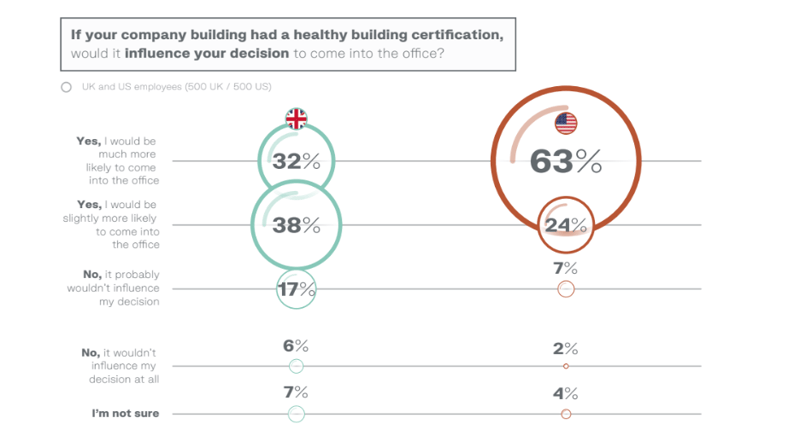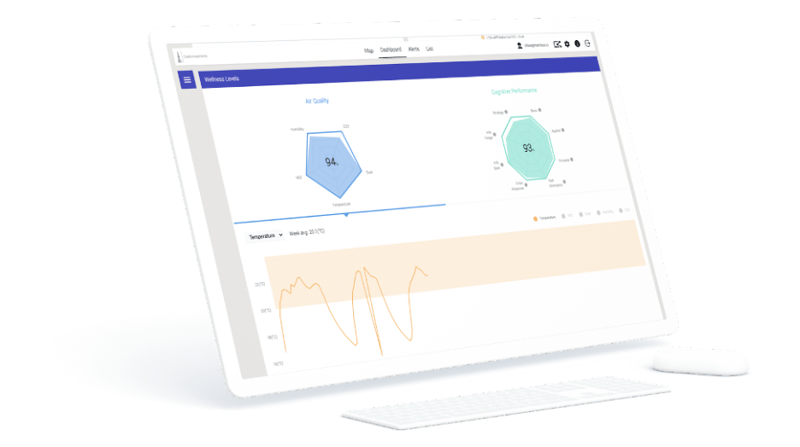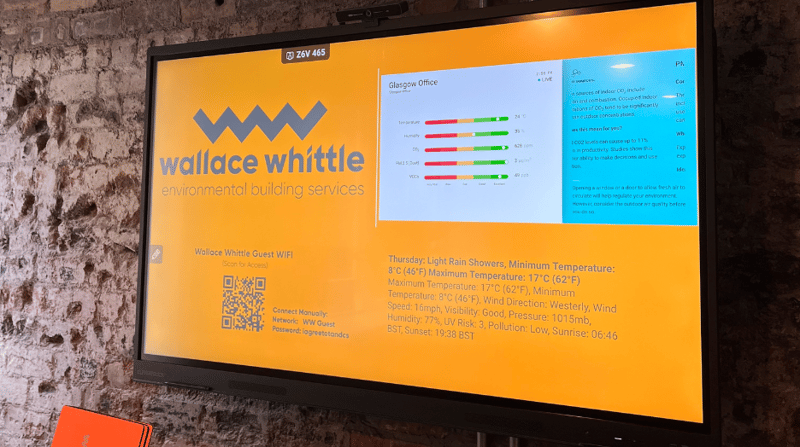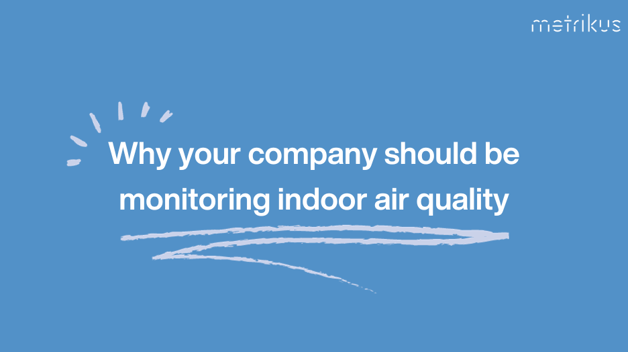Why your company should be monitoring indoor air quality
Good indoor air quality is no longer a nice-to-have, it’s a workplace priority.
Awareness is growing, regulations are catching up, and leading employers are already taking action.
Keep reading to find out more about the benefits of monitoring indoor air quality, from improving employee health and productivity, to creating more efficient spaces.
Why do companies need to monitor workplace indoor air quality?
1. Employee awareness is growing
It’s clear that COVID-19 helped to boost awareness about the importance of healthy buildings.
But with the pandemic fading away and more employees returning to the office, indoor air quality is still a top priority.
This year’s record-breaking wildfires across America, Canada and Europe have kept the issue at the forefront, with employees questioning whether or not the air inside their offices is actually safe to breathe.
And with low-cost sensors readily available, it’s now easier than ever for employees to take matters into their own hands and measure air quality wherever they are. Even if this data isn’t always particularly accurate, it still gives them the power to expose instances of poor air quality when companies aren’t monitoring levels themselves.
2. Leading employers are already taking action
Many of the world’s leading companies are already focused on creating healthy workplaces for their employees.
We’re working with a lot of forward-thinking firms like Wallace Whittle, who have implemented technology to boost the health and wellbeing of their employees.
With indoor air quality a top priority for employees, companies that don’t take steps to make improvements risk falling behind, especially when it comes to bringing employees back to the office.
According to research from AirRated, 69% of employees said they might not work for a company that isn't transparent about its indoor air quality. And a massive 78% of employees said they would be more likely to come into the office if it had a healthy building certification.
If companies want to attract and retain talent, they need to focus on collecting the right data and communicating it in meaningful ways to employees.
 3. Regulations are catching up
3. Regulations are catching up
Whether your company is based in the EU, the US, or the UK, indoor air quality regulations are on the way.
Up until now, there has been a distinct lack of legislation in this area, but things are changing quickly.
Updates to Building Regulations Part F have increased regulations around CO2 monitoring in the UK, and a recent paper by the Parliamentary Office of Science and Technology has called for new regulations across all parameters.
Similar progress is being made in the US, where experts from the Johns Hopkins Center for Health Security have called on states to create new legislation through the Model State Indoor Air Quality Act.
Indoor air quality also has an important role to play in healthy building certifications, with LEED recently announcing they will offer up to 10 points for continuous monitoring in v5.
If companies want to future-proof their offices, implementing technology to improve indoor air quality is a great place to start.
What are the benefits of monitoring indoor air quality?
1. Improving employee health
When indoor air quality is bad, it can cause a whole load of health problems.
Poor ventilation and filtration can increase the risk of virus transmission and cause ‘sick building syndrome’, leading to more sick days – something that costs the UK over £20 billion a year.
If you want healthy workers, you need to create a healthy environment for them to work in.
2. Optimizing employee productivity
The Harvard School of Public Health conducted studies on the impact of indoor air quality in the workplace.
They found that poor ventilation is so detrimental to cognitive function, that spending $40 per employee on improving it can yield $6,500 per employee in annual productivity gains.
This means that a company of 1,000 employees could increase productivity by $6.5 million a year by simply improving the air quality inside their offices.
 3. Boosting workplace efficiency
3. Boosting workplace efficiency
You can also use indoor air quality data to spot inefficiencies in your building management system (BMS) or heating, ventilation, and air conditioning (HVAC) systems.
This can help you take steps to reduce energy consumption – saving money and the planet.
How does indoor air quality monitoring work?
1. Install sensors and connect to a platform
The first step is to install sensors to monitor key indoor air quality parameters including CO2, PM2.5, TVOCs, temperature and relative humidity.
These sensors can then be connected to a platform, where you can access indoor air quality data quickly and easily.
2. Set up thresholds and automatic alerts
The next step is to set up thresholds for each parameter. If you’re not sure what these should be, the WELL Standard is a good place to start.
You can then receive automatic alerts when these levels are exceeded, so you can step in to prevent air quality from reaching unsafe levels.
3. Take action and increase transparency
As we always say, there’s no point collecting data if you’re not going to act on it.
Once you’ve got access to accurate indoor air quality data, you can make automatic adjustments to existing systems, and alert the relevant teams to take action to maintain a healthy and productive indoor environment.
As we’ve already mentioned, communicating what you’re doing is also an important part of the process. Giving employees access to real-time indoor air quality on employee apps and digital signage around your office is a great way to give them confidence that they’re working in a healthy environment.

Get started with indoor air quality monitoring
If you want to learn more about indoor air quality monitoring, we’re here to help. Get in touch with us now to speak to one of our workplace experts.




